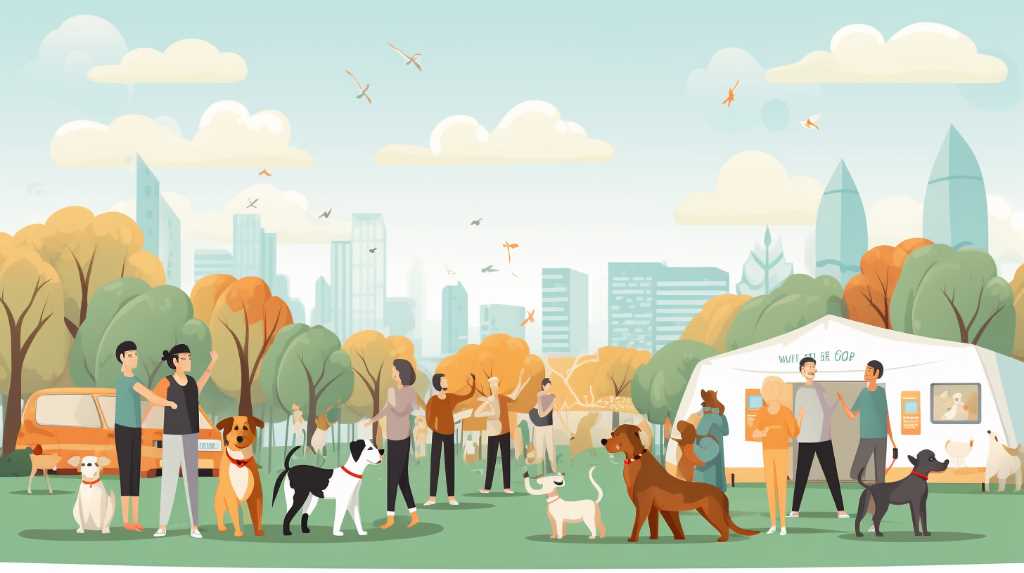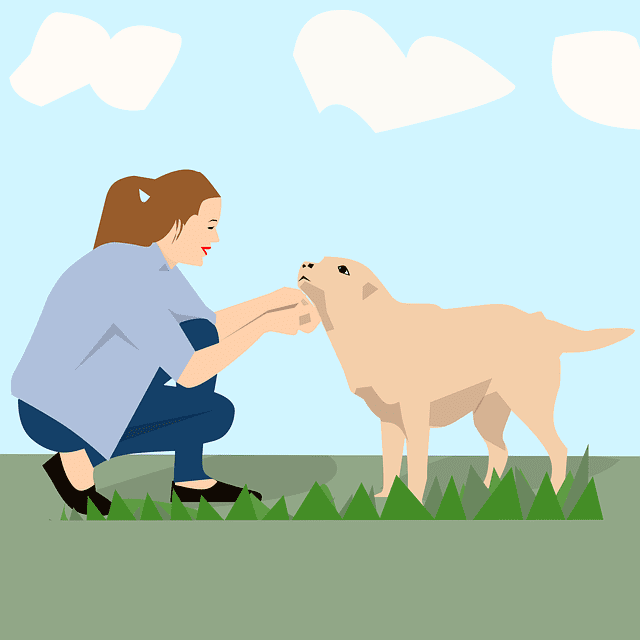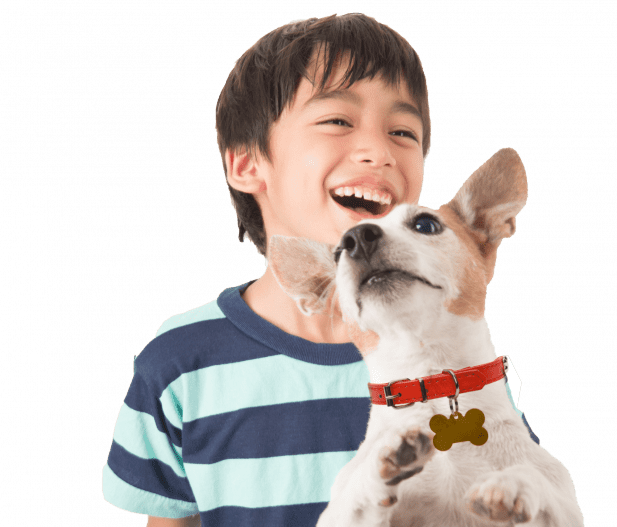Dog Adoption
What Elements Should You Consider When Thinking of Adopting a Dog?


You’ve decided to open your heart and home to a furry friend. That’s wonderful! Adopting a dog is a fulfilling journey, but it’s key you’re prepared.
From understanding their background, assessing health and behavior, to evaluating dietary needs and compatibility with your family, you’re in for a ride. But don’t fret, we’re here to guide you every step of the way, ensuring your new companion fits pawfectly into your life.
Let’s embark on this life-changing adventure together!
Understanding Your Potential Pet’s Background
You’ll need to understand your potential pet’s background before deciding on adoption. Knowing their past can greatly influence their future with you. It’s not just about breed or size; it’s about their history. Have they been abused or neglected? You can’t erase those scars, but you can help them heal.
Understanding their background will also help you prepare your home and schedule. If they’re a rescue dog, they might be shy or scared at first. They might need more time to adjust. You’ll need to be patient, loving, and understanding. It’s a commitment, but it’s one that’s incredibly rewarding.
Health Considerations for Your New Canine Companion
As you embark on this incredible journey of pet ownership, it’s crucial to prioritize your new canine companion’s health.


You’re not just getting a pet, you’re gaining a family member who relies on you for their wellbeing.
From regular vet visits, understanding common dog diseases, to considering pet insurance, let’s delve into these vital aspects of your furry friend’s health.
Routine Veterinary Care
Regular check-ups with a vet are essential when you’re considering adopting a dog, as it’s important to keep them healthy and up-to-date on their vaccinations.
Your passion to serve these innocent creatures is noble. However, it’s crucial to know what kind of commitment you’re getting into.
Remember, you’re adopting a living being, who’ll rely on you for:
- Regular vaccination updates to fend off deadly diseases.
- Dental check-ups, as oral issues can lead to more severe health problems.
- Regular exercise to keep them active and fit.
- Proper nutrition to ensure their overall well-being.
- Love, care, and attention. They aren’t just pets, they’re family.
Adopting a dog is a beautiful journey. Let’s make it more beautiful by ensuring their good health.
Common Dog Diseases
In this journey of dog ownership, it’s essential to be aware of common canine diseases, their symptoms, and prevention methods. Your furry friend relies on you to keep them healthy and safe.


Parvovirus, distemper, rabies, and heartworm disease are just a few ailments that can affect dogs. Early detection is crucial to mitigate the impact on your pup’s health. So, it’s not just about understanding these conditions; it’s also about recognizing the signs – abnormal behavior, loss of appetite, or changes in their physical appearance.
Remember, prevention is always better than cure. Regular check-ups, vaccinations, and a balanced diet can safeguard your dog from these diseases.
Now, let’s delve into the topic of pet insurance and its worthiness in securing your pet’s health.
Pet Insurance Worthiness
Pet insurance might seem like an unnecessary expense, but it’s actually a lifesaver when dealing with unexpected veterinary costs. Imagine the heartbreak of not being able to provide necessary medical care for your furry friend due to financial constraints. Now, consider how pet insurance can alleviate this burden:
- It gives you peace of mind, knowing you’re prepared for emergencies.
- It allows for better budgeting of pet care expenses.
- It can offer coverage for a wide range of treatments.
- It can lessen the financial blow of sudden illnesses or injuries.
- It signifies responsible pet ownership.
Insurance isn’t just about money; it’s about providing the best life for your companion. It’s about serving their needs as they unconditionally serve yours.
Behavior and Training Assessment of the Adopted Dog
You’ll need to assess the dog’s behavior and training level before making the decision to adopt. It’s essential to understand that every dog’s personality and temperament are unique and can profoundly impact your life.
Consider their activity level, social skills, and how they interact with children and other pets. Is the dog shy or outgoing? Do they know basic commands or need some training? By evaluating these factors, you’ll be able to determine if the dog is a good fit for your lifestyle and family.


Evaluating the Exercise and Dietary Requirements of Your Adopted Dog
Now that you’ve sized up your adopted dog’s behavior and training needs, let’s dive into the vital realm of exercise and dietary requirements. This is about more than just walkies and kibble. Each dog is unique, and knowing their specific needs is essential for their well-being.
- Your dog’s breed can dictate their dietary needs.
- Age and health condition significantly impact exercise requirements.
- Tailored diets can help manage health conditions like diabetes.
- The right exercise routine can enhance agility and life expectancy.
- Balanced diets improve coat condition and overall vibrancy.
Your commitment to understanding and meeting these needs not only ensures a healthier pup but also deepens the bond between you. So, let’s make every meal and movement count!
Compatibility Assessment With Other Pets and Children
It’s crucial to figure out how well your adopted dog gets along with other pets and children in your home. This compatibility assessment isn’t just an afterthought, it’s a vital part of ensuring your new furry friend can thrive in their new environment.
You’ve got to understand that every dog has a unique temperament and some may need more time to adjust than others. Be patient, and provide a safe and supportive space for this process. Allow interactions under supervision, and be prepared to intervene if necessary.
Always remember, it’s about creating a harmonious home where everyone feels comfortable and loved.
Now, before you seal the deal on this adoption, let’s dive into the importance of posing additional queries to the shelter.
Posing Additional Queries Before Finalizing Adoption
Don’t be shy about asking the shelter more questions before finalizing the adoption. You’re making a lifetime commitment; it’s your right to be thorough.


Here are some questions that tug at the heartstrings, evoke compassion, and deepen your understanding:
-
What’s the dog’s story? Where did they come from? How were they treated?
-
Can the dog cope with change? How do they respond to new environments or situations?
-
What’s their health status? Are there any ongoing medical issues?
-
How do they react to other dogs or pets?
-
What’re their unique quirks? What makes them special?
These questions aren’t just practical, they’re emotionally charged. They remind us that every dog deserves a loving, informed, and dedicated owner like you.


Frequently Asked Questions
What Is the Average Cost of Owning a Dog Annually?
In assessing the cost of owning a dog annually, you must consider food, vet bills, grooming, and potential boarding costs. It’s estimated to range from $500 to $2000, depending on the dog’s size and breed.
How Much Time Does a Dog Need for Social Interaction Daily?
When thinking about a dog’s daily social interaction needs, you should consider that they typically need several hours. This includes playtime, training, and just being in the company of their human family. It’s essential to their well-being.
Can I Travel Frequently With My Adopted Dog?
You can, but it’s not always easy. Consider your dog’s temperament, health, and comfort traveling. You’ll need to plan for pet-friendly accommodations and ensure they’re comfortable during transit. It’s a big commitment, but doable.
What Are Some Dog-Friendly Home Modifications to Consider?
When thinking about dog-friendly home modifications, consider their size, activity level, and breed-specific needs. You’ll need to secure potentially dangerous areas, install pet doors, and ensure flooring is durable and easy to clean.
How Do I Ensure My Dog Is Mentally Stimulated and Not Just Physically Active?
You’ve got to engage your dog’s mind, not just their body. Try puzzle toys, training sessions, and interactive games. They’ll love the challenge and it’ll prevent boredom. Remember, a mentally stimulated dog is a happy dog.
Conclusion
In a nutshell, adopting a dog isn’t a walk in the park. It’s a commitment, requiring deep consideration of the dog’s health, behavior, exercise and dietary needs, and compatibility with your family.
So, before you let those puppy eyes melt your heart, ensure you’ve asked all the right questions. Your diligence today can pave the way for a harmonious, love-filled relationship with your new furry friend tomorrow.


It’s a serious decision, but one that could fill your home with endless joy.




Hello, My Dog-Loving Friends! I’m Jason Brown, a social media marketer for Dog Training Schools and a writer at BestDogTraining.com. My world is all about the joy and wisdom our four-legged friends bring. I love the exchange of learning with dogs; it’s not just my job. It’s my way of life.
My journey began at Ohio State with a degree in journalism, fueling my passion for storytelling. This passion comes alive in every post and article I write, whether about the latest dog training techniques or heartwarming canine tales.
When I’m not immersed in the world of dogs, you can find me surfing. There’s a thrilling similarity between the unpredictability of the ocean and working with animals – both are endlessly fascinating. I’m also an aspiring poet, although I embrace the more humorous side of my attempts at verse.
Traveling is another passion of mine. My wife, kids, and I explore new places, always accompanied by our Basset Hound, Snoopy. He’s more than a pet; he’s integral to our family adventures.
Through my work, hobbies, and travels, I’ve discovered that life’s most fulfilling experiences come from sharing moments with family, friends, and a loyal dog. Follow me for stories and tips from a life enriched by dogs, the ocean, and family adventures! 🐕🌊👨👩👧👦
Dog Adoption
Why Adopting a Shelter Dog Is a Heartwarming Choice
Adopting a shelter dog is a heartwarming choice for those seeking a new canine companion. Beyond the joy of welcoming a new furry friend into your life, choosing to adopt from a shelter has profound benefits for both the adopter and the dog.
By providing a loving home to a shelter dog, you are offering a second chance to an animal in need and contributing to the reduction of overcrowding in shelters. Additionally, shelter dogs undergo comprehensive behavioral assessments, ensuring a better match for potential adopters.
The decision to adopt from a shelter is not only a compassionate one but also a cost-effective and health-promoting choice.
Saving Lives One Adoption at a Time
How does adopting a shelter dog contribute to saving lives one adoption at a time?
The answer lies in the countless adoption success stories that highlight the profound community impact of choosing to adopt from a shelter. Each adoption represents not only giving a deserving dog a loving home but also freeing up space and resources at the shelter for another animal in need.
Furthermore, these adoptions directly contribute to reducing the number of animals euthanized due to overcrowding in shelters. The community impact is significant, as it fosters a culture of compassion and responsible pet ownership.
Second Chances for Abandoned Canines
Abandoned canines find second chances through shelter dog adoptions, offering them a renewed hope for a loving and stable home. Canine rehabilitation plays a crucial role in preparing these dogs for their new lives.


Many abandoned dogs have suffered from neglect, abuse, or trauma, leading to behavioral issues that can hinder their chances of being adopted. Animal welfare organizations and shelters focus on providing these dogs with the necessary care, training, and socialization to address their behavioral challenges.
Through dedicated rehabilitation programs, these canines are given the opportunity to overcome their past experiences and develop into well-adjusted pets. By supporting and participating in shelter dog adoptions, individuals contribute to the broader effort of giving abandoned canines the second chance they deserve, ultimately enriching both the lives of the dogs and their adoptive families.
Cost-Effective Way to Find Your New Best Friend
Finding your new best friend at a shelter is a cost-effective option for pet adoption. The adoption process at shelters is often more affordable than purchasing a pet from a breeder or pet store. Shelters usually cover initial veterinary costs, such as spaying or neutering, vaccinations, and microchipping, reducing the financial burden on the adopter.
Additionally, the community support for shelter pets is remarkable. Many shelters rely on donations, volunteers, and foster families to help care for and rehabilitate animals, allowing them to offer adoption at a lower cost. By adopting from a shelter, not only do you save money, but you also contribute to the shelter’s mission of providing a second chance to abandoned animals.
This cost-effective approach to finding a new furry companion is truly a win-win for both the adopter and the shelter.
Comprehensive Behavioral Assessments for a Perfect Match
Adopting a shelter dog is a cost-effective and compassionate choice, and it becomes even more rewarding when shelters conduct comprehensive behavioral assessments to ensure the perfect match between the dog and its new owner.
Behavioral evaluations, compatibility testing, shelter dog suitability, and temperament assessment all play a crucial role in this process. These assessments help in understanding the dog’s personality, energy levels, and any specific needs or concerns.


Health Benefits of Dog Ownership
Following a thorough behavioral assessment, owning a shelter dog has been associated with numerous health benefits for individuals and families.
The physical health benefits of dog ownership are well-documented, with dog owners exhibiting lower blood pressure, reduced risk of heart disease, and increased physical activity through regular walks and exercise with their pets.
Additionally, the mental health benefits are significant, as the companionship and emotional support provided by dogs can alleviate symptoms of anxiety, depression, and loneliness.
The unconditional love and loyalty of a shelter dog can enhance overall emotional well-being and provide a sense of purpose.
Furthermore, the daily routine and responsibility of caring for a dog can promote a structured lifestyle, fostering a sense of fulfillment and stability for their owners.
Frequently Asked Questions
What Are Some Common Misconceptions About Adopting Shelter Dogs?
Misconceptions about adopting shelter dogs include concerns about behavior and health, overlooking the benefits of providing a second chance. Rehabilitation programs challenge stereotypes, promoting the potential of these dogs to thrive in loving homes.
How Can I Help Support Shelters and Rescue Organizations Even if I Can’t Adopt a Dog?
Supporting shelters can be done through fundraising events and volunteering opportunities. Community outreach and spreading awareness about the importance of shelter dogs also greatly helps. Donations, organizing events, and advocating for adoption are impactful ways to make a difference.


Are There Any Specific Considerations for Adopting a Senior Dog From a Shelter?
When considering adopting a senior dog from a shelter, it’s important to be mindful of potential adoption challenges such as behavioral issues and health concerns. Senior dog care requires patience, understanding, and a commitment to providing specialized care.
What Resources Are Available for Training and Socializing a Newly Adopted Shelter Dog?
For training resources and behavioral support for newly adopted shelter dogs, consider community classes, online training programs, and professional dog trainers. Socialization tips like gradual exposure to new environments and positive reinforcement techniques can help acclimate your dog.
Can You Provide Tips for Introducing a Shelter Dog to Other Pets in the Household?
Introducing a shelter dog to other pets in the household requires patience and strategic socialization techniques. Assess pet compatibility, gradually introduce them in a neutral space, and use positive reinforcement. Seek training resources for guidance.




Hello, My Dog-Loving Friends! I’m Jason Brown, a social media marketer for Dog Training Schools and a writer at BestDogTraining.com. My world is all about the joy and wisdom our four-legged friends bring. I love the exchange of learning with dogs; it’s not just my job. It’s my way of life.
My journey began at Ohio State with a degree in journalism, fueling my passion for storytelling. This passion comes alive in every post and article I write, whether about the latest dog training techniques or heartwarming canine tales.
When I’m not immersed in the world of dogs, you can find me surfing. There’s a thrilling similarity between the unpredictability of the ocean and working with animals – both are endlessly fascinating. I’m also an aspiring poet, although I embrace the more humorous side of my attempts at verse.
Traveling is another passion of mine. My wife, kids, and I explore new places, always accompanied by our Basset Hound, Snoopy. He’s more than a pet; he’s integral to our family adventures.
Through my work, hobbies, and travels, I’ve discovered that life’s most fulfilling experiences come from sharing moments with family, friends, and a loyal dog. Follow me for stories and tips from a life enriched by dogs, the ocean, and family adventures! 🐕🌊👨👩👧👦
Dog Adoption
Helping Timid Dogs Shine in Foster Care Programs
Timid dogs often struggle to adapt to new environments, particularly in foster care programs. Understanding and addressing their specific needs is crucial in helping them thrive. This requires a comprehensive approach that includes creating a safe and nurturing environment, implementing gradual socialization strategies, engaging in confidence-building activities, and utilizing fear reduction techniques.
By tailoring the foster care experience to meet the unique needs of timid dogs, it is possible to unlock their potential and facilitate successful integration into their forever homes. This paper will explore the various methods and strategies that can be employed to support timid dogs in foster care, ultimately enabling them to flourish and find their place in a loving and nurturing environment.
Understanding Canine Timidity
Understanding canine timidity requires a comprehensive analysis of the factors contributing to the development and expression of fearful behavior in dogs. Canine body language serves as a crucial indicator, with signs such as lowered body posture, tucked tail, and avoidance of eye contact often accompanying timid behavior.
Trust building exercises play a pivotal role in addressing canine timidity. These exercises involve gentle and consistent interactions that help timid dogs develop confidence and trust in their environment and human companions.
Gradual exposure to new experiences in a controlled and positive manner can also aid in desensitizing timid dogs to fearful stimuli.
Additionally, creating a safe and secure environment, offering positive reinforcement, and employing calming techniques can all contribute to helping timid dogs overcome their fears and build their confidence.
Creating a Safe Foster Environment
Establishing a safe foster environment is crucial for helping timid dogs acclimate and thrive in their temporary homes. To achieve this, consider the following key aspects:


- Building Trust: Encourage gradual interactions, use positive reinforcement, and allow the dog to initiate contact to build trust at their own pace.
- Establishing Routine: Dogs, especially timid ones, thrive on predictability. Establish a consistent daily routine, including feeding, walking, and playtime, to provide a sense of security.
- Safe Space: Create a designated area where the dog feels secure and can retreat to when feeling overwhelmed, ensuring it is quiet and free from disturbances.
- Consistent Caregivers: Assign a primary caregiver or a small group of consistent caretakers to minimize stress and help the dog feel secure through familiar interactions.
Gradual Socialization Strategies
When establishing a safe foster environment for timid dogs, it is essential to gradually introduce socialization strategies that respect the individual pace and comfort level of each dog. Positive reinforcement plays a crucial role in encouraging timid dogs to engage in social interactions. By using treats, praise, and toys, timid dogs can associate socialization with positive experiences, gradually building their confidence.
Slow exposure to new people, animals, and environments is key to preventing overwhelming situations that can exacerbate fear. It’s important to monitor the dog’s body language for signs of stress and to provide a safe space for them to retreat to if needed.
Over time, as the dog becomes more comfortable, the exposure can be increased in a controlled and positive manner, helping them to gradually overcome their fears and build healthy socialization skills.
Confidence-Building Activities
Gradual exposure to confidence-building activities, such as agility courses and interactive play sessions, can further support timid dogs in developing their social skills and self-assurance within the foster care environment. These activities provide essential socialization opportunities and trust-building exercises, helping timid dogs to overcome their fears and build confidence.
Confidence-building activities can be tailored to the specific needs of each dog, allowing them to progress at their own pace while feeling secure. Interactive play sessions, in particular, facilitate positive interactions with humans and other dogs, fostering a sense of trust and companionship.
Agility courses not only improve physical fitness but also boost mental acuity, promoting a sense of accomplishment and self-assurance in timid dogs.
- Tailored activities for individual needs
- Facilitation of positive interactions
- Promotion of mental acuity
- Boosting of self-assurance
Fear Reduction Techniques
Fear reduction techniques are implemented gradually to help timid dogs acclimate to the foster care environment and build confidence. Positive reinforcement is a key component in these techniques, where dogs are rewarded for displaying brave behavior or for simply being calm in new or potentially fearful situations.


Desensitization training is also employed, exposing dogs to low levels of fearful stimuli and gradually increasing exposure as they become more comfortable. This process helps dogs learn to remain relaxed in situations that would typically induce fear.
Frequently Asked Questions
What Are Some Common Misconceptions About Timid Dogs That Potential Foster Parents Should Be Aware Of?
Misconceptions about timid dogs include them being untrainable or aggressive. Overcoming fear involves positive reinforcement and gradual exposure. Socialization techniques help build confidence. Potential foster parents should be aware of these to support timid dogs effectively.
Are There Any Specific Training Techniques That Should Be Avoided When Working With Timid Dogs in Foster Care?
When working with timid dogs in foster care, it’s important to avoid aversive training techniques such as harsh corrections or punishment. Instead, focus on positive reinforcement and desensitization techniques to build trust and confidence in the dog.
How Can Foster Parents Help Timid Dogs Adjust to New Environments and Routines?
Foster parents can help timid dogs adjust to new environments and routines by using positive reinforcement techniques and building trust through gentle and consistent interactions. Patience, understanding, and a calm environment are essential for the dog’s emotional well-being.
Are There Any Specific Signs That Indicate a Timid Dog Is Feeling Overwhelmed or Stressed in a Foster Home?
Recognizing stress signals in timid dogs is crucial for supportive socialization. Building confidence involves identifying fearful behavior patterns and providing a calm, secure environment. Signs of stress may include excessive panting, pacing, or avoidance behaviors.
What Resources Are Available for Foster Parents to Seek Additional Support and Guidance When Working With Timid Dogs?
Support groups and training resources are available for foster parents seeking guidance with timid dogs. They can connect with behavioral specialists, attend workshops, and join online communities to gain knowledge and support in effectively caring for and helping timid dogs thrive.




Hello, My Dog-Loving Friends! I’m Jason Brown, a social media marketer for Dog Training Schools and a writer at BestDogTraining.com. My world is all about the joy and wisdom our four-legged friends bring. I love the exchange of learning with dogs; it’s not just my job. It’s my way of life.
My journey began at Ohio State with a degree in journalism, fueling my passion for storytelling. This passion comes alive in every post and article I write, whether about the latest dog training techniques or heartwarming canine tales.
When I’m not immersed in the world of dogs, you can find me surfing. There’s a thrilling similarity between the unpredictability of the ocean and working with animals – both are endlessly fascinating. I’m also an aspiring poet, although I embrace the more humorous side of my attempts at verse.
Traveling is another passion of mine. My wife, kids, and I explore new places, always accompanied by our Basset Hound, Snoopy. He’s more than a pet; he’s integral to our family adventures.
Through my work, hobbies, and travels, I’ve discovered that life’s most fulfilling experiences come from sharing moments with family, friends, and a loyal dog. Follow me for stories and tips from a life enriched by dogs, the ocean, and family adventures! 🐕🌊👨👩👧👦
Dog Adoption
How Adopting a Shelter Dog Can Upgrade Your Health
Adopting a shelter dog goes beyond providing a home for a deserving animal; it can significantly enhance one’s overall health and well-being.
The companionship of a canine friend has been linked to a range of physical and mental health benefits. Research suggests that dog owners experience reduced stress levels, increased physical activity, and improved cardiovascular health.
The emotional support and unconditional love provided by a shelter dog can also contribute to improved mental wellness, potentially alleviating symptoms of anxiety and depression.
Additionally, the responsibility of caring for a dog can instill a sense of purpose and routine, fostering a healthier lifestyle.
By welcoming a shelter dog into their lives, individuals may find themselves on a path to enhanced health and happiness.
Canine Companionship
How does canine companionship positively impact human health and well-being?
Canine companionship has been shown to provide significant emotional support and social connection for individuals. Dogs have an innate ability to sense and respond to human emotions, providing comfort and companionship during times of distress. This emotional support can help reduce stress, anxiety, and feelings of loneliness, ultimately leading to improved mental well-being.


Additionally, owning a dog can enhance social connection by providing opportunities for social interaction with other dog owners, leading to the formation of new friendships and a sense of community. These social connections can contribute to a greater sense of belonging and overall happiness.
Mental Wellness Support
Research studies have consistently shown that owning a dog can have a positive impact on mental wellness, contributing to reduced stress, increased emotional support, and enhanced social connections.
Dogs provide emotional support, offering companionship and a non-judgmental presence that can alleviate feelings of loneliness and anxiety. This emotional bond between a person and their dog can lead to therapeutic bonding, which has been linked to improved mood and decreased symptoms of depression.
The responsibility of caring for a dog also provides a sense of purpose and routine, which can be particularly beneficial for individuals dealing with mental health challenges.
Additionally, the social connections facilitated by owning a dog, such as interactions with other dog owners at the park, can foster a sense of community and belonging, further enhancing mental wellness.
Physical Health Benefits
Owning a dog from a shelter can have a significant impact on physical health, promoting increased physical activity and overall well-being. The following are the key physical health benefits associated with adopting a shelter dog:
- Improved Fitness: Regular walks, runs, and playtime with a dog can significantly enhance cardiovascular health, muscle strength, and overall fitness levels.
- Weight Management: The daily exercise routine that comes with owning a dog can aid in weight management and help prevent obesity-related health issues.
- Enhanced Overall Well-being: The companionship and active lifestyle facilitated by a shelter dog can lead to reduced stress, increased energy levels, and a greater sense of fulfillment.
The combination of improved fitness, weight management, and overall well-being makes adopting a shelter dog a valuable investment in one’s physical health.


Stress Relief and Relaxation
Regularly engaging with a shelter dog can provide significant stress relief and promote relaxation. Interacting with a dog can lower cortisol levels, reduce blood pressure, and increase levels of serotonin and dopamine, which contribute to a sense of calm and well-being.
Engaging in activities such as walking, playing, or simply petting a dog can serve as mindfulness practice, helping individuals focus on the present moment and reduce anxiety. Additionally, the companionship of a shelter dog can encourage relaxation techniques, such as deep breathing and meditation, further enhancing stress reduction and emotional well-being.
The unconditional love and nonjudgmental nature of dogs create a soothing environment that can alleviate the pressures of daily life, ultimately contributing to an overall sense of relaxation and improved mental health.
Heart-Healthy Rewards
Engaging with a shelter dog not only promotes stress relief and relaxation but also contributes to heart-healthy rewards through the physical activity and emotional support provided by canine companionship.
The cardiovascular benefits of owning a dog are well-documented, with studies showing that dog owners have lower blood pressure, reduced cholesterol levels, and decreased risk of heart disease. The emotional connections formed with a shelter dog can also lead to decreased levels of stress and anxiety, further benefiting heart health.
The daily routine of walking, playing, and caring for a dog not only increases physical activity but also provides a sense of purpose and companionship, which are essential for overall well-being.
These heart-healthy rewards make adopting a shelter dog a valuable investment in both physical and emotional health.


Frequently Asked Questions
How Can I Prepare My Home for a Shelter Dog?
Creating a welcoming environment for a shelter dog involves pet-proofing your home, providing a designated space, and introducing new routines. Secure hazardous items, set up a comfortable bed, and establish a feeding and exercise schedule to ease their transition.
Are There Any Specific Training Tips for Shelter Dogs?
In training shelter dogs, positive reinforcement and effective socialization techniques are vital. Consistency and patience are key to building trust and confidence. Practicing empathy and understanding the dog’s history can aid in tailoring training to their specific needs.
What Are Some Common Behavioral Issues With Shelter Dogs and How Can They Be Addressed?
Common behavioral issues in shelter dogs include anxiety and difficulty with socialization. Addressing anxiety through positive reinforcement training and providing a structured environment can help. Socialization techniques involving gradual exposure to new experiences can also be beneficial.
Are There Any Potential Health Risks Associated With Adopting a Shelter Dog?
Potential health risks associated with adopting a shelter dog include allergies and zoonotic diseases. To mitigate these risks, thorough health screenings and behavioral training are essential. For instance, a case study showed a shelter dog transmitting zoonotic diseases to its owner.
How Can I Help My Shelter Dog Adjust to Their New Environment?
When helping your shelter dog adjust to their new environment, focus on bonding activities and socialization to build trust and establish a routine. Gradually introduce them to their new surroundings, ensuring a calm and reassuring atmosphere.


Hello, My Dog-Loving Friends! I’m Jason Brown, a social media marketer for Dog Training Schools and a writer at BestDogTraining.com. My world is all about the joy and wisdom our four-legged friends bring. I love the exchange of learning with dogs; it’s not just my job. It’s my way of life.
My journey began at Ohio State with a degree in journalism, fueling my passion for storytelling. This passion comes alive in every post and article I write, whether about the latest dog training techniques or heartwarming canine tales.
When I’m not immersed in the world of dogs, you can find me surfing. There’s a thrilling similarity between the unpredictability of the ocean and working with animals – both are endlessly fascinating. I’m also an aspiring poet, although I embrace the more humorous side of my attempts at verse.
Traveling is another passion of mine. My wife, kids, and I explore new places, always accompanied by our Basset Hound, Snoopy. He’s more than a pet; he’s integral to our family adventures.
Through my work, hobbies, and travels, I’ve discovered that life’s most fulfilling experiences come from sharing moments with family, friends, and a loyal dog. Follow me for stories and tips from a life enriched by dogs, the ocean, and family adventures! 🐕🌊👨👩👧👦
-



 Dog Grooming1 year ago
Dog Grooming1 year ago7 Essential Tips for Dog Grooming: From Coat Length to Cooling Down Period
-



 Dog Breeds1 year ago
Dog Breeds1 year agoIs There a Real Connection Between Dog Breeds and Their Inherent Aggressiveness?
-



 Videos1 year ago
Videos1 year agoDog Training 101: How to Train ANY DOG the Basics
-



 Dog Adoption1 year ago
Dog Adoption1 year agoWhy Should You Consider Bringing Home a Senior Dog?
-



 Dog Adoption1 year ago
Dog Adoption1 year agoWhat Are the Considerations Before Adopting a Special Needs Dog?
-



 Dog Adoption1 year ago
Dog Adoption1 year agoWhat Crucial Elements Should I Consider in a Dog Adoption Contract?
-



 Dog Training1 year ago
Dog Training1 year agoUnleash Your Pooch’s Potential: Mastering the Art of Fetch
-



 Dog Adoption1 year ago
Dog Adoption1 year agoMaking Your Home a Haven for Your New Dog}












